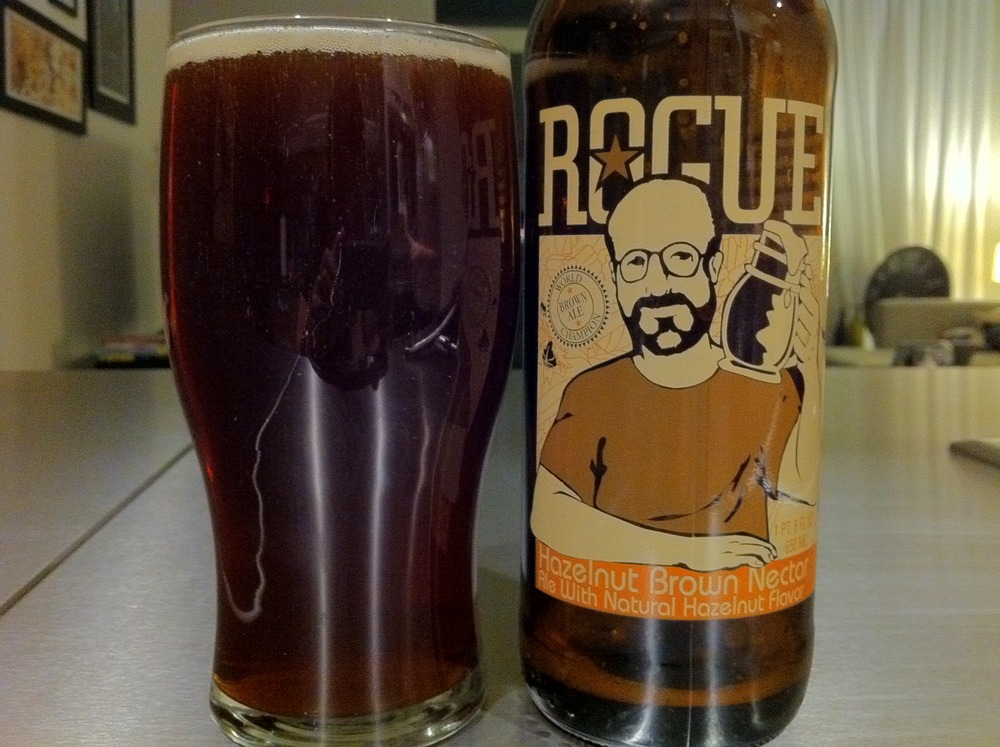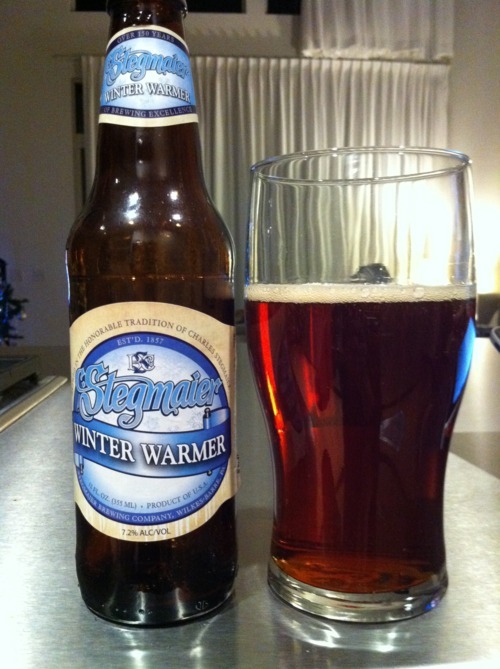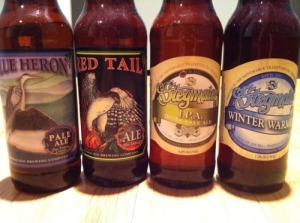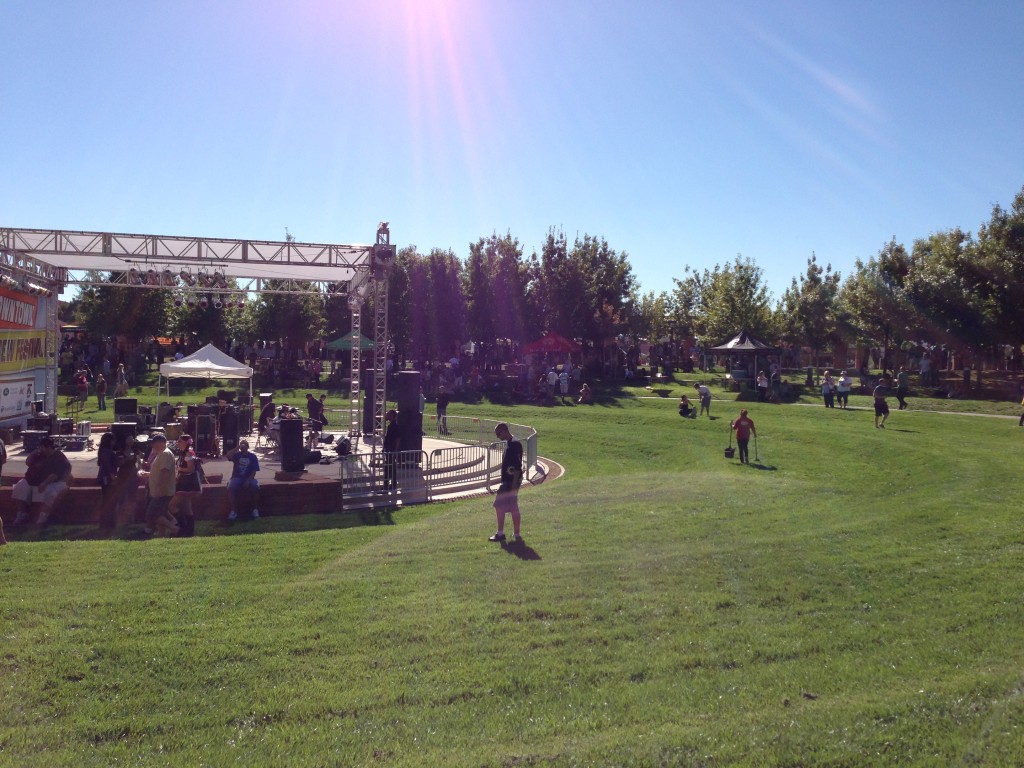
A shot of the festival grounds with local band Tribal Seeds
On October 20th, Motley Brews presented the follow-up to their 2012 Great Las Vegas Festival of Beer: The Las Vegas Downtown Brew Festival. After having a blast at the last Motley Brews presented festival, I was more than excited for this one. To start with, the location and timing of this event could not have been more perfect! The Clark County Amphitheater is a nice, large, outdoor venue, and the great October Vegas weather made for a phenomenal marriage!
For their first outing in 2011, I had complained that the event seemed disorganized, and way too compact. These problems were pretty much resolved on their second go around. This time, I can only tip my hat to the organizers and sponsors of this fantastic festival! We arrived a bit late (roughly 2:15 PM), but had no trouble finding parking in the large adjacent parking lot. Upon walking up to the entrance, we were quickly able to redeem our Groupons, and were inside and ready to drink within just a few minutes.
Upon entering, we made our way right to the Joseph James tent to try and wet our palettes with their R/D #11 Ginger Lemon Weizen. Thankfully, and remorsefully, we were able to get our hands on the very last drops, which may have proven to be the best beer I had the pleasure of experiencing. The beer tasted like a mix of spicy ginger ale with a refreshing lemon twist. I really hope this one sees a bottle release, as I want everyone to be able to taste this amazing local brew! Their other two R/D offerings did not disappoint either; both the Black Rye Session Pale and the Bourbon-Barrel Aged Russian Imperial Stout were quite the tasty offerings! Joseph James never ceases to amaze me when it comes to what they pull off for these special events. I will continue to look forward to more R/D batches, while still sipping on their great year-round fermented offerings.
 Karl Herrera, the Las Vegas Beer Ranger, pouring some New Belgium brews
Karl Herrera, the Las Vegas Beer Ranger, pouring some New Belgium brews
Our next stop was to the New Belgium tent to get a pour of their refreshing Shift Lager. Shift really is a perfect summertime beer with its light-body, and flavorfully crisp finish. While chatting with Las Vegas’ new Beer Ranger, Karl Herrera, he officially coined the term “Get Shift-faced!” which pretty much demands to be on the front of a T-shirt! New Belgium was also pouring their Red Hoptober, Ranger IPA, and of course, Fat Tire. Their Super IPA was also on display at the Get Hopped Up Tent, along with Stone 16th Anniversary IPA and Bear Republic’s Racer 5.
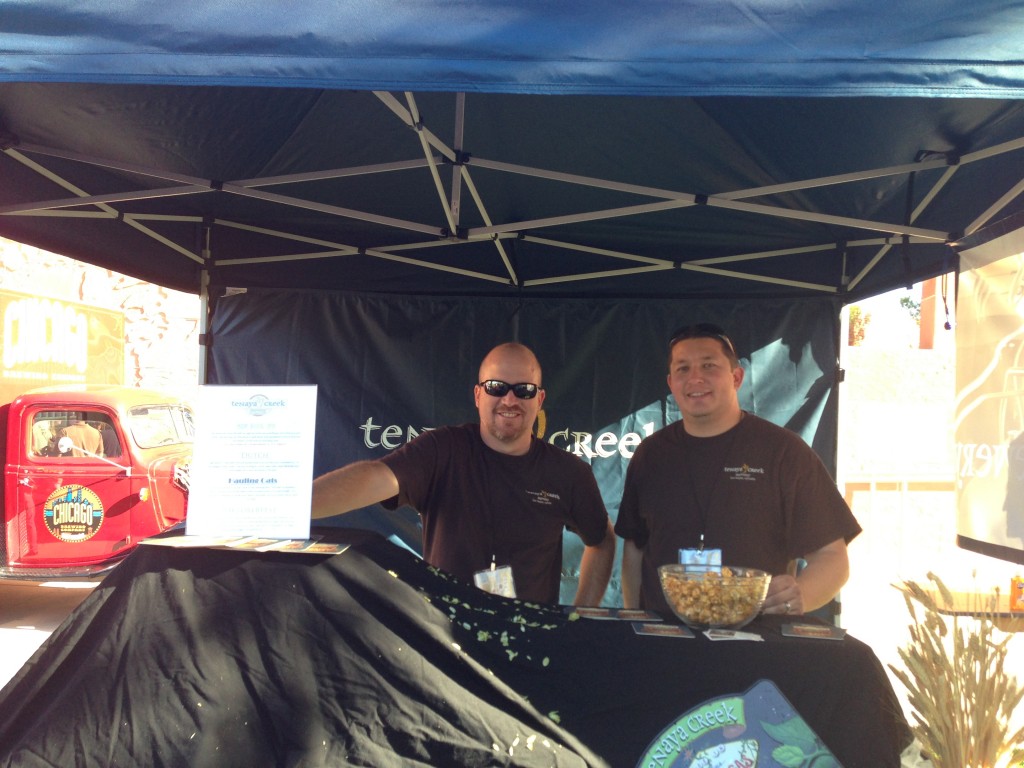 Tim and Alex from Tenaya Creek
Tim and Alex from Tenaya Creek
From there we hit another local favorite in Tenaya Creek. They were happily pouring their new Dutch-style Belgium Tripel, Oktoberfest Lager, the recently bottled Hauling Oats Oatmeal Stout, and their iconic Hop Ride. Not to mention, they also decided to unveil a Hop Ride infused popcorn! Being a Las Vegas staple for years, you really can’t go wrong with anything that Anthony and Tim brew up. Their year round beers are top-notch, and their seasonal brews always leave you looking forward to the next one! If you haven’t been to the brewery yet, you should make it a point to do so. Hell, there’s a good chance you’ll see your’s truly at the bar sipping on a Hop Ride!
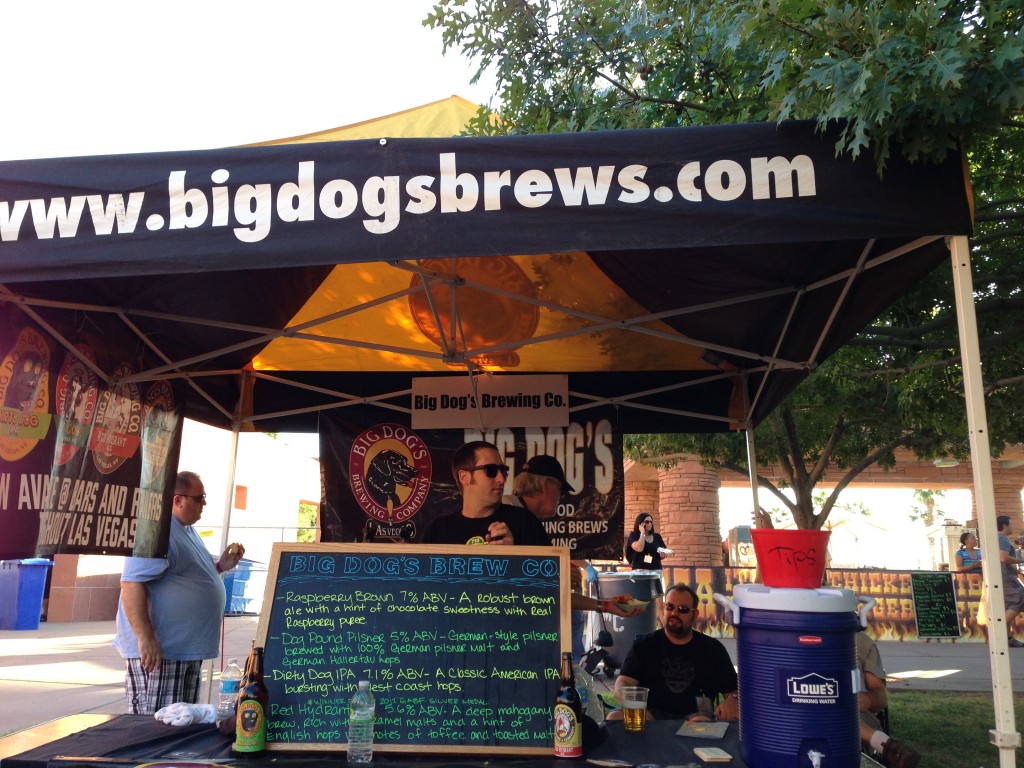
Another local staple, Big Dog’s Brewing Company was pouring just nearby. Their selections included Dirty Dog IPA, Las Vegas Lager, Lake Mead Monster Double Red Ale, and the Great American Beer Festival 2012 Silver Medal winning Red Hydrant Ale! Big Dog’s is another local brewery that you just can’t go wrong with! While I would have loved to have seen the seasonal Pumpkin Ale, or the monster that is War Dog IPA, I was more than pleased with what they had to offer! With 2 locations in the Valley, there is no reason not to stop by and grab a drink!
After making our rounds with the local breweries and New Belgium, we decided to hit the outside circle and try and get our hands on some beers we haven’t had before. Our next stops were to Tommyknocker’s and Moa. Tommyknockers, from Colorado, is fairly new to the Las Vegas craft brew scene. They had with them a nice assortment, including Vienna Amber Lager, Maple Nut Brown, Imperial Nut Brown, and a nice, mild, Pumpkin Ale. All of their offerings were solid, and can be found locally at this time.
Moa, from New Zealand, is a brewery that I have yet to try, but I’ve always been curious about. They had samplings of their Breakfast, Pale Ale, and Blanc Evolution. I only tasted the first two, but I was quite fond of both! As a nice contrast to most breakfast inspired stouts, Moa’s Breakfast had a bright, wheat, sweet cherry flavor that would pair nicely with a berry muffin or eggs. While it won’t be for everyone, I think it would be a nice substitute for a mimosa at brunch. The Pale Ale had a subtle citrusy hop nose and flavor, which was balanced by a bitter malt aftertaste.
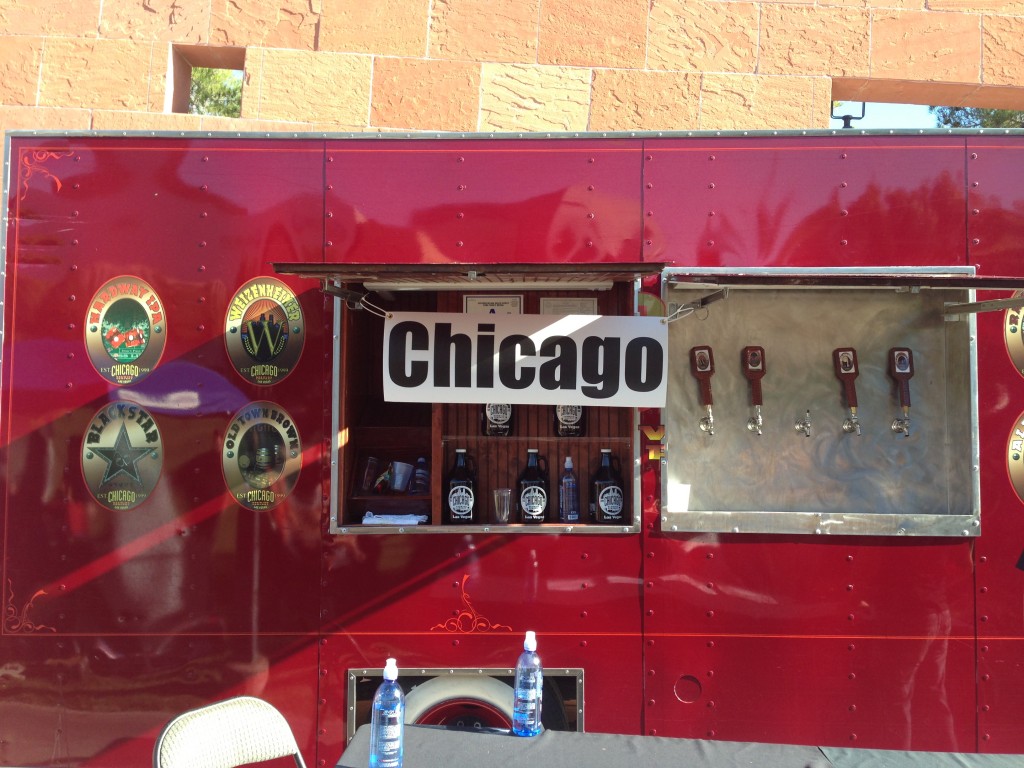
From here, we went along the line, sampling well known beers from the likes of Dogfish Head (Namaste and Midas Touch), Firestone Walker (Pale 31, Union Jack), Sierra Nevada (Hoptimum, Pale Ale, Torpedo, Kellerweis), Lagunitas, Indian Wells, Three Monkeys, Chicago Brewing Co., and a newer name to the Las Vegas scene: Riley’s
To be honest, I had not heard much about Riley’s until this event. Riley’s is a smaller brewery from Madera, CA, who are in roughly their fifth year of existence. Their lineup consisted of: Sancha, which reminded me of a cross between a pale ale and a honey ale; Vixen: a coffee/chocolate inspired stout; and Wildcat IPA. All three were quite tasty brews, and show a lot of promise for this new brewery. I’ll be looking forward to what they decide too cook up next!
If there is one beer trend that I really enjoy, it’s the new “Session IPA/Pale Ale” trend. Something just appeals to me about a low ABV, flavorful IPA that won’t make you feel all nice and fuzzy after just one glass. Thankfully, one of our last stops, Ballast Point, brought along a beer that is a perfect pale ale for this occasion. Their Even Keel Pale Ale, was just fantastic, and perfect for this mild October day. It had a perfect pine aroma, with just enough citrus to hit your nose. The taste was quite the same, with a great dry finish that didn’t linger for too long. Not be outdone, they also brought along an arsenal of their other lovingly-crafted brews: Big Eye IPA, Calico Amber, Pale Ale, and the incomparable Sculpin IPA.

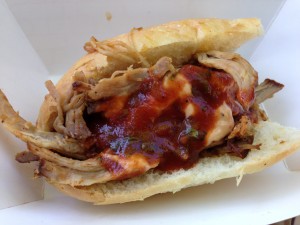
I can’t finish this without giving a shout-out to all of the food vendors that made it out to quench the hunger of the beer sipping crowd. From restaurant representatives to food trucks, there was something for everyone. Our eatery of choice ended up being Haulin’ Balls, who serve a variety of gourmet sandwiches based around, you guessed it, the meatball. The food was nothing short of remarkable, and I would recommend that any carnivore seek them out.
All in all, this may have been the most pleasant beer festival that I’ve had the opportunity to attend. A big thanks is in order to all the vendors, sponsors, and especially Southern Wine and Spirits of Nevada for all the phenomenal brands that they helped bring together! As a group, we’d also like to thank any of our followers that found us and said hello. It’s always great to meet you guys in person, and we appreciate all of the kind words and constructive feedback that we receive.
In closing, if you have not had an opportunity to attend one of these festivals, then you are missing out! Do yourself a favor and make sure that you clear your calendar off and come out and have a blast! …I’m sure you’ll see us there!
 Your’s truly filling in for Karl at New Belgium, while he took a well deserved bathroom break
Your’s truly filling in for Karl at New Belgium, while he took a well deserved bathroom break
 First, let me express my surprise in seeing the amounts of pumpkin and fall themed beers that are on the shelves already. And they’ve even been there for a couple weeks now! I can’t even buy a pumpkin at the grocery store, how the hell are there so many pumpkin beers available?
First, let me express my surprise in seeing the amounts of pumpkin and fall themed beers that are on the shelves already. And they’ve even been there for a couple weeks now! I can’t even buy a pumpkin at the grocery store, how the hell are there so many pumpkin beers available?
That aside, the pumpkin beers are here. Now, I don’t claim to be any sort of pumpkin beer connoisseur, but damn it, Dogfish Head’s Punkin has got to be one of the best pumpkin beers there is. At the very least, it’s got to be the best pumpkin beer available in Las Vegas.
As is the case with most pumpkin beers, Punkin is brewed with not only pumpkin, but also various spices that are traditionally used in making pumpkin pie. While this gives many pumpkin beers an artificial and exaggerated smell of pumpkin pie, Punkin is well balanced and uses real ingredients making the aroma of this beer jump out at you like a real pumpkin pie. The aroma is spicy, sweet, sugary, with a hints of clove and a graham cracker crust. This has such an amazing aroma, I recommend putting this beer in a some sort of tulip or cognac glass to best experience it.
There is a moderate hop bitterness in this beer, but it is only present in the initial taste, fading away to reveal a well balanced brown ale, sweetened with pumpkin and clove flavors. The aftertaste lingers in your mouth the way a bite of pie does, drawing you in to take another sip.
If I had some vanilla ice cream sitting around, I would have made a float out of this beer. Please go out and buy this beer while it’s available, and if you find a better pumpkin beer, let me know!
It has been over a month since I last wrote on here. Despite originally planning on using this as a means to talk about my homebrews, I have failed thus far. So, let’s make up for lost time.
I have brewed 6 different beers in the past month. Through this, I have changed my workflow when brewing and I have decreased the amount of time and effort it takes to brew. After each beer, I decide that I am exhausted and need to take a break for a couple of weeks. That never lasts, I get the itch to brew again a few days later. Below are the beers I have made:
Pale Ale: This was the first beer I made. I wrote this recipe entirely from scratch and intentionally wrote the recipe to be as basic as possible for the sake of keeping it simple. Pale malted barley and centennial hops. Once the beer was brewed and ready to go into the fermenter, I measured the gravity (density of sugar) and it was spot on to my calculations. Awesome! One week later, after all the visual signs of fermentation disappeared, I checked the gravity and found that it didn’t drop as much as it was supposed to. Meaning instead of my beer having 5% alcohol, it was only at 3%. I later learned that the most likely reason this happened was due to my inability to keep a consistent temperature during fermentation. Yeast is very temperature dependent and different yeast strains ferment at different temperatures. When the yeast notice a rise in temperature, they work harder. When the yeast notice a decrease in temperature, they go into hibernation. The yeast I was using was meant to ferment at 70º F. Not the easiest thing to do in Las Vegas during the summer. With this beer, I learned how to maintain that temperature.
I continued the process to finish this beer anyways. Despite it not being perfect, I wanted to see what it would taste like finished. I dry hopped the beer and let it sit for another week and then I bottled it and let it condition and carbonate in the bottle for two weeks.
A few days ago I cracked one of the bottles open to taste it. To my surprise, it was great. Despite the failed fermentation, it tasted like a normal beer. It didn’t have the watery taste that art artificial beers have (Bud/Miller/Coors) and it didn’t seem sweet from the residual sugars. It had a very dry, crisp finish and was very refreshing. The aftertaste was however a bit bland compared to the initial taste. I had intentionally used few ingredients so I could have a blank slate. Sure enough, this gave the aftertaste an expected simple taste to it, but I was suprised that it wasn’t more present.
Black IPA: I initially was planning on brewing regular IPA next, but I was too excited for this beer that I couldn’t wait and decided to brew this one next. Building upon my pale ale recipe, I added two more malts: crystal malt to give it another element of sweetness, and carafa malt to make the beer black in color with a slight roastiness. I still used only one variety of hop, but this time I used cascade hops.
I had brewed only two gallons of the pale ale. This beer, and all the other beers that I made, I brewed three gallons. That means more grains. Not to mention the fact that this was going to have a higher alcohol content than the pale ale so even more grains were used. Long story short, I mashed the grains with too much water and spilled some. While mashing I also had a hard time keeping a consistent temperature. When mashing you typically keep the water between the mid 140ºs to high 150ºs. Any lower and the sugar conversion doesn’t take place. Any higher and you stop the conversion process. Long story short, I measured the gravity before the boil and I was way off. Not wanting to have another weak beer, I made a few changes to the recipe and added some turbinado sugar to bring the sugar content up. After the beer finished the first stage of fermentation I tested the gravity, and it was right at it needed to be, bringing the beer to 6.8% alcohol content!
This beer is still carbonating so I haven’t had a chance to taste the finished product yet. But the taste I took a taste when I was bottling it makes me very excited to drink this! It has a very hoppy aroma but isn’t too bitter. Cascade hops aren’t really known for their bitterness. The addition of the crystal and carafa malts give the beer a nice malty body.
IPA: The original plan was that this beer and the black IPA would be the exact same beer except with the black IPA getting the carafa malts to make it black. My intention was to make very similar beers with only one different ingredient to taste the difference that it makes. This was originally going to be brewed second. It would be the same recipe as the pale ale, but with more hops and an additional malt. The black IPA would then be the exact beer as this, but with the carafa malt. Because I brewed the black IPA before this one, and had the mishaps that I did, I brewed this one a bit differently. I was very cautious and scared that my sugar levels would be low again. Despite not spilling or boiling over the wort, I was still worried. I decided to add less water before the boil than I did before. This would make the sugar level a little bit more concentrated. I finished brewing, took a gravity measurement and was shocked. I wasn’t too low on sugar at all. It was crazy high, and I didn’t even add sugar like I did to the black IPA! The result was that this beer finished with an alcohol content of 8.5%.
This beer is also still carbonating and should be ready to drink about the same time as the black IPA (I brewed them 2 days apart). This beer tastes very different from the black IPA, despite the original plan of them being very similar. They have the same amounts of hops in them, but since this has a higher alcohol level, the residual sugars mask some of the bitterness and leave mostly just hop aroma. The added alcohol also give it a slightly thicker body, making this a very smooth beer with a very balanced hop level and a high alcohol content.
Brown Ale/Porter: I’m grouping these together because they were brewed one day apart and have a combined story. I kinda used recipes for these. I used the ingredients that the recipes called for but I changed the amounts used to match the alcohol and bitterness levels that I was looking for. I also changed the recipe for the brown ale because I wanted to try adding some dried maple syrup. Basically, it’s maple syrup that was boiled down to a solid and broken up into small chunks. This sounded like it would be awesome with the brown ale.
The first 3 beers I used a California strain of yeast. These two beers used two different British yeast strains. Both of the yeast strains wanted to ferment at 65º. I kept the first three beers at 70º, so I figured that this wouldn’t be too hard. Wrong. Keeping these at 65º in the summer was a bad idea. First, I mentioned earlier that if the temperature is higher, then the yeast work faster. This sounds like a good thing except for the fact that when the yeast work faster, they put out some off flavors. Specifically, it makes the beers smell and taste like alcohol. The brown ale fermented to the right level that it should have, 6.4%, however it tastes like it is in the range of 8-10% but without the sweetness/body to balance it. I still thought it tasted good, just not what I was planning for.
The porter on the other hand, suffered due to my attempts to control the temperature. The wild temperature swings caused a stuck fermentation for the porter. Unlike the pale ale, this time I tried to fix it. I added the California yeast I had used before and raised the temperature to 70º. Unfortunately, that didn’t work. The porter stopped at 4.3% rather than 6.3% alcohol. In addition to that, it has the strong alcohol taste that the brown ale has.
Both these beers will be bottled in the next week or two and will be done conditioning about 3 weeks after that. It will be interesting to see how they turn out.
6: I’m not sure what style to call this. I’ve been calling it 6 since it’s the sixth beer I’ve brewed. After the temperature issues I’ve had, I started to be intrigued by the saison style of beer. Saisons were brewed by farmers in Belgium and left to ferment in barns during the summer. The result is a yeast strain that ferments up to 90º! Living in Las Vegas, I was excited to try this yeast. I wrote the recipe from scratch by first writing a recipe for a saison the same way I did with the brown ale and porter, by copying ingredients and adjusting the amounts for a saison recipe. I then re-wrote it substituting the grains in the recipe with the leftover grains I had from the first 5 beers. Since I am very fond of black beers, I threw in the rest of the carafa I used from the black IPA. I chose hops based off of what I had leftover as well. Saisons are not typically hoppy beers but I decided to try making this one moderately hoppy, about the level of a pale ale. I used the hops I had that were not over the top to try and keep them from being overpowering. I went to the local homebrew shop to buy the yeast but they didn’t have the specific yeast I wanted. I instead grabbed a different Belgian yeast that will ferment up to 78º. I typically keep my house between 70º-75º so I decided it should be fine.
Saisons are typically light in color and light in hops. They have a very crisp, dry finish and are a little peppery from the Belgian hops that are typically used. Mine is a hoppy, black saison. I figured this will either be awesome or terrible.
I just brewed this beer last friday so it is still fermenting and I haven’t taken a gravity reading or taste since I put it in the fermenter. That one taste was pretty good though! The taste will change quite a bit as the sugars are converted into alcohol and the hops balance out, but so far it is at a good starting point!
There you have it. Six beers in four weeks. I am going to wait to brew again until I bottle the brown ale and the porter. I haven’t decided what I’ll brew next. I am going to keep away from making traditional British beers for now until the temperature drops outside. I am planning on ordering the specific Belgian yeast I’m looking for online and will brew several beers with it. For sure a traditional saison and an IPA using the yeast. Knowing me, I’ll probably make it a black IPA. Whatever I brew next, I’ll be sure to actually start writing about it and posting the pictures I take!
ALC/VOL: 7ish%? The bottle has the gravity listed in Plato and I don’t feel like doing to the math to convert it into alcohol by volume.
Color: Dark amber brown.
Smell: For lack of a better term, it smells like every other brown ale. Just a bit nuttier.
Feel: A bit more carbonation than most brown ales.
Taste: It tastes a bit nutty!
Strong hazelnut taste. Do not drink too cold or the hazelnut flavor will be a bit hidden. It has a very basic brown ale base to it but the hazelnut extract makes this a very unique tasting beer.
Overall: Very unique, great tasting beer. I have yet to taste a bad beer from Rogue. That being said, this beer has a very distinct taste and as such, it might be a bit much to have more than one.
Lastly, I don’t think I have ever been disappointed by the artwork on Rogue’s labels.
Thumbs up.
ALC/VOL: 7.2%
Color: Amber/brown with reddish hue
Smell: This beer smells very fruity, primarily grapefruit citrus with apple and lightly spiced with cinnamon. Maple syrup makes up the sweet sugary smell.
Feel: This feels very smooth and crisp. Not overly carbonated or bubbly.
Taste: Primarily a well balanced brown ale. Not overly spiced and seasoned like most winter beers. If it weren’t named Winter Warmer, it could very easily be a year round brew similar to Fat Tire or Moose Drool. The bitterness is moderate with a strong malty flavor. It tastes almost like a cinnamon apple pie. The grapefruit aroma is also present in the overtones of this beer. The aftertaste has a short hoppy bite with strong taste of alcohol finishing it off. Overall: A very tasty beer from a brewery over 150 years old, that I’ve never heard of. After tasting this, I’m looking forward to also trying out their IPA that I also received. As mentioned earlier, this is more of an every day beer as opposed to a strict winter ale. Definitely worth drinking in my opinion.
For Christmas, the wife and I received a beer of the month subscription from our BFF, Emily.
We received our first shipment this week. 12 beers, 4 different types from 2 different breweries. The club is meant to introduce people to beer from small breweries in the country that only distribute locally. Not surprisingly, I’ve never heard of either brewery I received this month.
Mendocino Brewery is based in California and has been brewing beer since the 80’s. The extent of their success is mostly winning a few awards at California state fairs.
Second, Stegmaier Brewery is based in Pennsylvania. This company was founded in the mid 1800s by a German immigrant. Needless to say, I’m a bit more excited to try this brewer’s beer.
I’ve never written a beer review before. I’m going to start by trying to review all of the beers I receive from my 3 month subscription. This should be interesting…


 Karl Herrera, the Las Vegas Beer Ranger, pouring some New Belgium brews
Karl Herrera, the Las Vegas Beer Ranger, pouring some New Belgium brews Tim and Alex from Tenaya Creek
Tim and Alex from Tenaya Creek Your’s truly filling in for Karl at New Belgium, while he took a well deserved bathroom break
Your’s truly filling in for Karl at New Belgium, while he took a well deserved bathroom break





